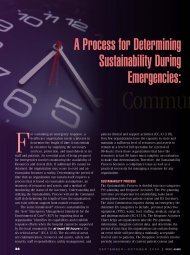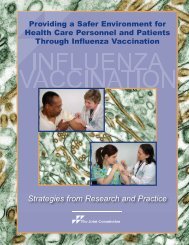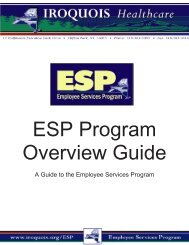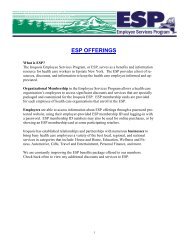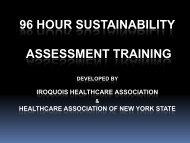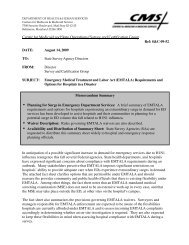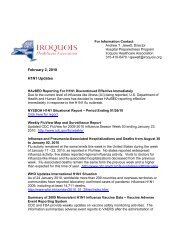NYS Public Health Legal Manual: A Guide for Judges, Attorneys ...
NYS Public Health Legal Manual: A Guide for Judges, Attorneys ...
NYS Public Health Legal Manual: A Guide for Judges, Attorneys ...
You also want an ePaper? Increase the reach of your titles
YUMPU automatically turns print PDFs into web optimized ePapers that Google loves.
§ 1.61 NEW YORK STATE PUBLIC HEALTH LEGAL MANUAL<br />
harm to “self” presumably would not apply where the person is of sound<br />
mind or otherwise capable of making an in<strong>for</strong>med and reasoned judgment<br />
as to treatment). This criterion would require persons to “submit to medical<br />
procedures in order to eliminate a health threat to the community.”<br />
Matter of Storar, supra, 52 N.Y.2d at 377. Mandatory treatment then may<br />
continue “as long as the emergency persists.” Rivers v. Katz, supra, 67<br />
N.Y.2d at 496. See Matter of Sampson, 29 N.Y.2d 900, 901 (1972) [noting<br />
government right to direct treatment of child to protect public health].<br />
In making the determination whether mandatory treatment is constitutional,<br />
courts apply the same substantive and procedural due process standards<br />
as they would <strong>for</strong> any serious deprivation of liberty, i.e., the same<br />
standards applicable to isolation and quarantine. See IV(G), supra. These<br />
include a finding that the threat to the community is supported by “clear<br />
and convincing evidence,” and that mandatory treatment is the “least<br />
restrictive alternative.” In re K.L., supra, 1 N.Y.3d at 372; Rivers v. Katz,<br />
supra, 67 N.Y.2d at 497-98. And the same procedural due process balancing<br />
test <strong>for</strong> the timing of the holding of a hearing <strong>for</strong> judicial review must<br />
apply as well. In re K.L., supra, 1 N.Y.3d at 373-74. See also New York<br />
City <strong>Health</strong> Code [24 RCNY] § 11.23(l) [requiring a court order in New<br />
York City <strong>for</strong> the <strong>for</strong>cible administration of any medication].<br />
The principles governing mandatory treatment apply as well to mandatory<br />
vaccination, which is but a subclass of treatment applicable to persons<br />
exposed to or potentially exposed to contagious diseases. To the<br />
extent that mandatory vaccination is not <strong>for</strong>eclosed by law (and so would<br />
first require a declaration of a health emergency and an order suspending<br />
that law (see VIII, infra)), there would have to be a balancing between a<br />
compelling government interest versus a fundamental personal right and,<br />
where there is a communicable disease health threat, that balance may<br />
well shift to the government. Eichner v. Dillon, 73 A.D.2d 431, 455 (2d<br />
Dep’t 1980), mod. sub nom. Matter of Storar, 52 N.Y.2d 363 (1981) [an<br />
individual “may not refuse to be vaccinated where the refusal presents a<br />
threat to the community at large”]; Ritterband v. Axelrod, 149 Misc. 2d<br />
135 (Sup. Ct., Albany Co., 1990) [rejecting constitutional challenge to<br />
DOH regulations requiring mandatory immunizations of health care<br />
workers <strong>for</strong> rubella]. See 10 NYCRR § 66-1.10 [in the event of an outbreak<br />
of vaccine-preventable diseases, the State Commissioner of <strong>Health</strong><br />
32




